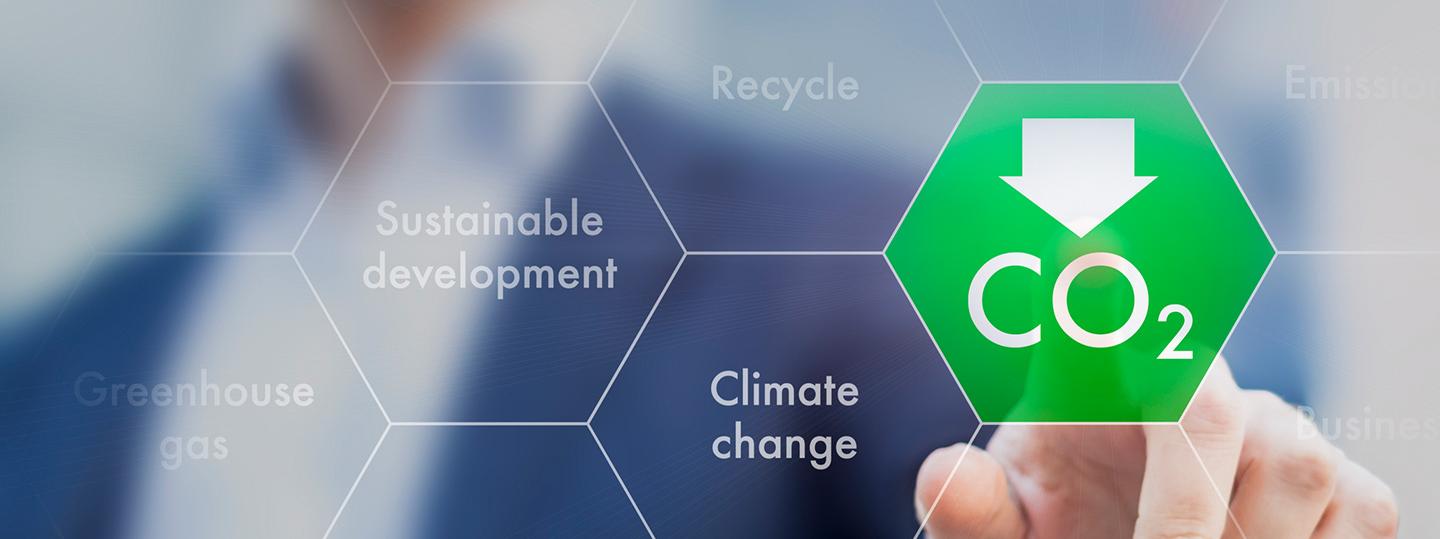
Carbon leakage aid: Using mandatory investment as a way of paving the way to "zero carbon"
The BEHG Carbon Leakage Ordinance (BECV) is intended to cushion future financial burdens in the context of national emissions trading. In this context, the planned benefits amounting to several hundred million euros per year for companies eligible for assistance from 2023 onwards will be linked to various quid pro quos. For example, it is envisaged that participating companies will have to spend a large part of their financial support on viable climate-friendly investments. Although viewed critically by parts of the business community, this investment obligation opens up a great opportunity to link the financial resources with the development and design of a holistic "zero carbon" strategy.
Introduction of national emissions trading results in new costs for industry
Since the introduction of the national emissions trading system at the beginning of 2021, all CO2 emissions from the use of fuels that were not previously part of the existing European emissions trading system have been subject to a CO2 price in Germany. As a result of CO2 pricing under the national emissions trading scheme, many industrial plants and companies have to anticipate additional costs. Whether cement plants, metal processors, foundries or the ceramics industry, the sectors most affected are those that are currently highly dependent on the use of fossil fuels. In addition, the increase in certificate prices in the wake of the November 2020 amendment to the Fuel Emissions Trading Act puts them at a considerable disadvantage at an early stage compared with international competitors who are not subject to comparable CO2 pricing.
Carbon leakage ordinance to provide relief for affected companies
In order to prevent these industries from migrating abroad due to competitive disadvantages caused by CO2 pricing, the Fuel Emissions Trading Act (BEHG) provides for the possibility of taking appropriate measures to prevent carbon leakage. The SESTA Carbon Leakage Ordinance (BECV) passed by the Bundestag on June 24 will set in motion corresponding compensation regulations and provide relief for a large number of companies.
The Carbon Leakage Regulation is closely aligned with the Carbon Leakage Protection System under the European Emissions Trading Scheme (EU ETS). For example, the list of sectors covered by the EU emissions trading scheme serves as a basis for assessing the risks of relocation and thus for the selection of eligible companies. Under certain conditions, it is also possible to extend it to other sectors. The amount of the aid is determined by the relevant emission level, a sector-specific level of compensation and the price of emission allowances.
Granting of aid to prevent carbon leakage from 2023 onwards dependent on the provision of counterpart contributions
However, the granting of aid under the Carbon Leakage Regulation is linked to various quid pro quos that companies have to provide from the 2023 accounting year onwards. These include:
- the operation of a certified energy management system in accordance with DIN EN ISO 50001 or an environmental management system in accordance with Ordinance (EC) No 1221/2009,
- for smaller companies with a total energy consumption of fossil fuels of less than 10 GWh on average over the last three calendar years
- , the operation of an uncertified energy management system based on the DIN EN ISO 50005:2021 applicable from autumn 2021 (at least according to implementation level 3); or
- Membership in an energy efficiency and climate protection network registered with the Energy Efficiency and Climate Protection Network initiative.
Another key aspect of the quid pro quo to be provided is the mandatory investments for climate protection measures from 2023:
- investments to improve energy efficiency which have been specifically identified and assessed as economically feasible within the framework of the respective energy management system according to Section 10 of the Carbon Leakage Ordinance; or
- as an alternative, investments for measures to decarbonize the production process.
The Carbon Leakage Ordinance also regulates the amount of investments to be made. This means that the investment amounts spent by the company, excluding subsidies, must correspond to at least 50 percent of the subsidy granted in the previous year for 2023 and 2024, and at least 80 percent from 2025 onwards. However, investments must only be made in cost-effective climate protection measures with relatively short payback periods of initially no more than nine years.
Investment obligation? Or a financial injection for sustainable investments? The right angle is crucial
The granting of aid under the Carbon Leakage Ordinance is thus accompanied by a specific obligation for participating companies to implement specific measures in terms of reducing CO2 emissions. This investment obligation creates attractive financial opportunities for a more sustainable, but also climate-neutral long-term approach. It is therefore all the more important to embed the corresponding measures in a holistic "zero-carbon" strategy that goes beyond simple efficiency and compensation measures.
The path to "zero carbon" requires tailor-made strategies
On the road to climate neutrality, companies can draw on a wide range of measures. However, depending on the operation and the location, the conditions and the necessary measures may differ significantly. Therefore, tailor-made concepts are required to ensure the desired objectives.
This is where experienced service providers such as ENGIE come in, who accompany the entire transformation process through to climate neutrality – from the analysis of the carbon footprint to the planning and implementation through to the continuous optimization in operation. All steps are coordinated by ENGIE as a partner who, with its expertise in building and systems engineering and decades of experience in energy management, combines the two central foundations for a "Real Zero", also as part of international projects.
"Real Zero" instead of carbon leakage: Five steps towards climate neutrality
Unique circumstances require tailor-made concepts. When planning and implementing holistic measures, ENGIE therefore follows a five-stage roadmap that paves the way for companies to achieve climate neutrality.
Our Expert










